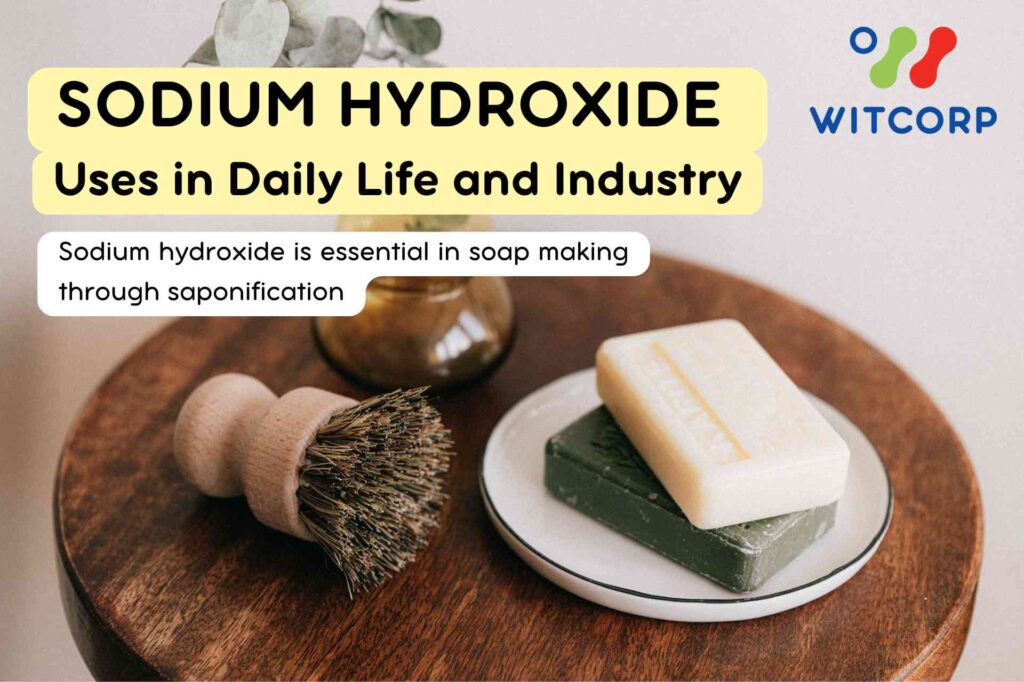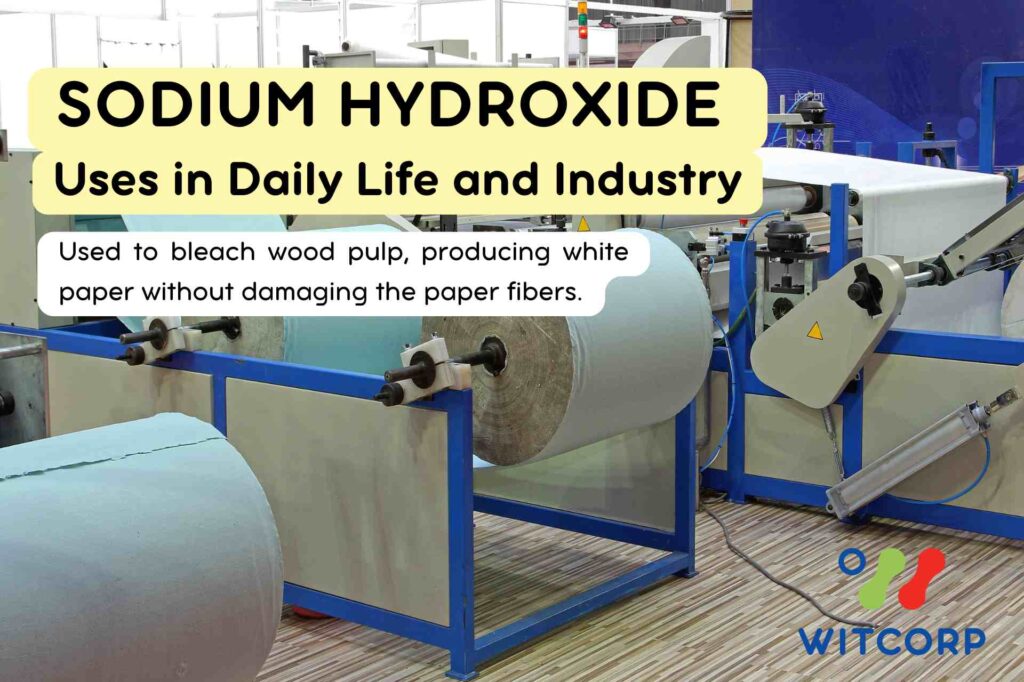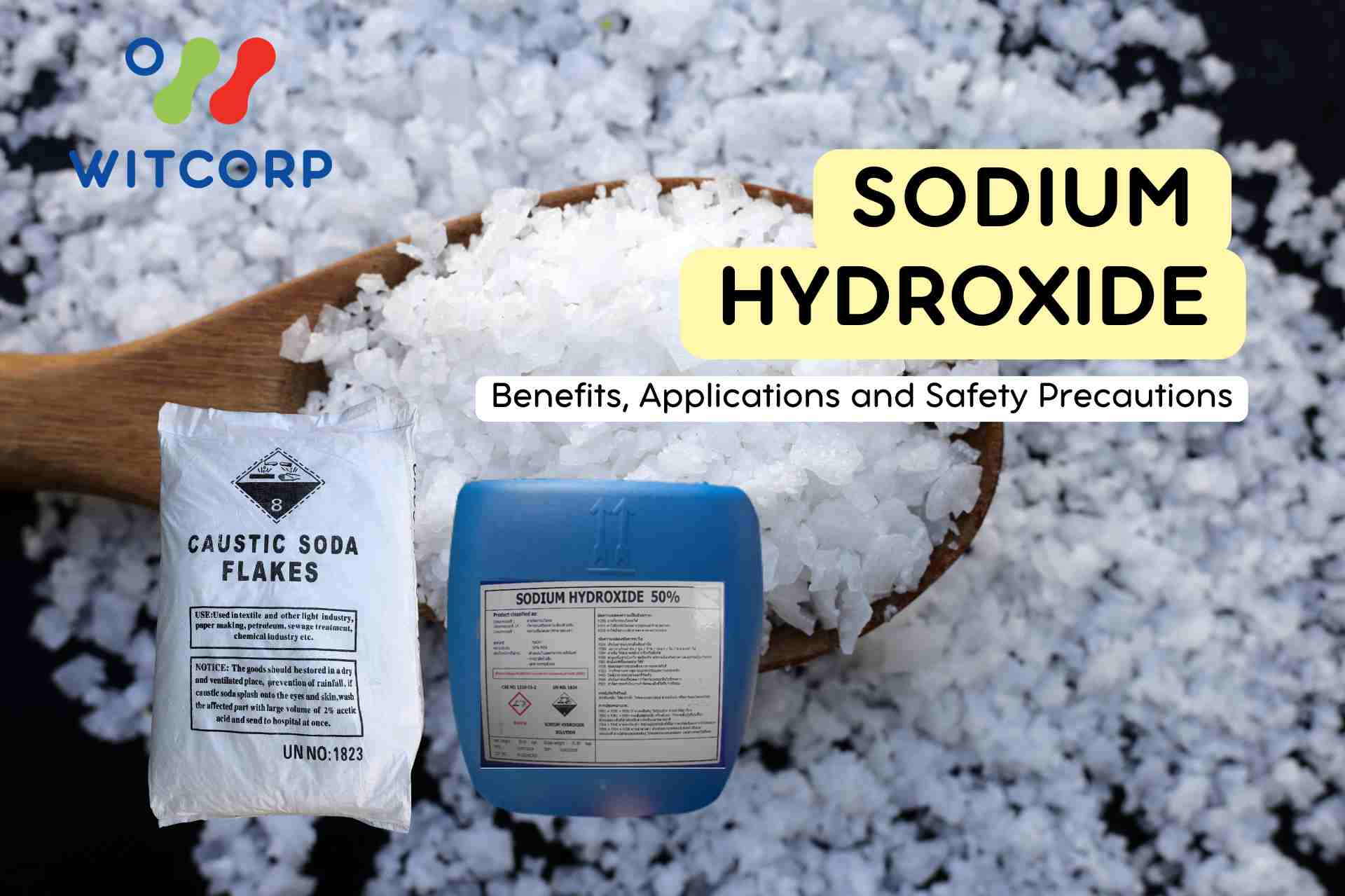Introduction
Sodium hydroxide uses are more widespread than most people realize. From the soap you use daily to the paper you write on and the tap water you drink, sodium hydroxide plays a crucial role in production processes. While it requires careful handling, when used correctly, sodium hydroxide offers tremendous benefits in both household and industrial applications. This comprehensive guide will help you understand everything about sodium hydroxide in an accessible and safe manner.
What is Sodium Hydroxide?
Sodium hydroxide, also known as caustic soda, is a chemical compound with the formula NaOH. It appears as a white solid that can be in flake, pellet, or powder form, dissolves rapidly in water, and generates significant heat during dissolution.
Common names you may have heard:
- Caustic Soda
- Lye
- Sodium Hydrate
- Soda Lye
- White Caustic
Special Properties of Sodium Hydroxide
Sodium hydroxide has properties that make it useful for various applications:
Physical Properties:
- White pearl-like solid
- Highly hygroscopic (absorbs moisture from air)
- Dissolves quickly in water with heat generation
- Available in multiple forms: flakes, pellets, powder, or solution
Chemical Properties:
- Strong base (alkali)
- Very high pH (13-14)
- Highly corrosive
- Excellent at dissolving fats and proteins
How is Sodium Hydroxide Produced?
The most common production method is the Chlor-Alkali Process, which involves electrolysis of brine (salt water). This process produces three products:
- Sodium Hydroxide (Caustic Soda)
- Chlorine Gas
- Hydrogen Gas
10 Sodium Hydroxide Uses in Daily Life and Industry

1. Soap and Cleaning Product Manufacturing
Sodium hydroxide is essential in soap making through saponification, a chemical reaction between fats or oils and sodium hydroxide that produces soap and glycerin.
Simple Soap Making at Home:
- Use vegetable oils (coconut, palm, olive)
- Mix with sodium hydroxide and water
- Cure soap for 4-6 weeks before use
2. Drain Cleaning
Sodium hydroxide effectively unclogs drains by dissolving fats, hair, and debris that accumulate in pipes.

3. Paper Industry
Used to bleach wood pulp, producing white paper without damaging the paper fibers.
4. Food Industry
- Cleaning bottles and containers
- Processing starch products into sugar
- Manufacturing monosodium glutamate (MSG)
- Adjusting pH levels in food processing
5. Wastewater Treatment
Used to neutralize acidic wastewater in industrial plants before discharge into natural water bodies.

6. Rubber Processing Plants
Assists in processing natural rubber into various products.
7. Textile and Fiber Industry
- Dyeing and bleaching fabrics
- Washing silk
- Manufacturing rayon fibers

8. Home Disinfection
When mixed with water in appropriate ratios, it can disinfect areas in the home.
For those interested in gentler and surface-safe cleaning alternatives for the home, you can learn more about baking soda and acetic acid, both of which are natural substances with a wide range of household uses.
9. Metal Industry
Used in cleaning and preparing metal surfaces before plating or painting.
10. Manufacturing Other Chemicals
Sodium hydroxide is a crucial starting material for producing many industrial chemicals.
Safety Precautions and Safe Handling
Hazards to Be Aware Of
Sodium hydroxide is highly corrosive and can cause:
- Severe skin burns
- Blindness if contact with eyes occurs
- Life-threatening injury if swallowed
- Respiratory tract irritation
Required Personal Protective Equipment (PPE)
- Safety Goggles or chemical splash goggles with face shield
- Chemical-resistant Gloves (Neoprene, Nitrile, or PVC)
- Protective Clothing or apron covering skin
- Dust Mask for powder or flake form
- Rubber Boots (never leather, as caustic soda destroys leather)
Proper Handling Methods
CRITICAL RULE: Always add caustic soda to water, NEVER add water to caustic soda!
- When dissolving sodium hydroxide, slowly add it to water while stirring continuously
- NEVER pour water onto sodium hydroxide as this causes violent heat generation and splashing
- Use in well-ventilated areas
- Store away from children and pets
- Do not mix with acids or other chemicals without proper knowledge
First Aid Procedures
In case of skin contact:
- Rinse with flowing cold water for 15-20 minutes
- Remove contaminated clothing immediately
- Seek medical attention immediately
Should the substance get into the eyes:
- Flush eyes with flowing water continuously for 15 minutes
- Remove contact lenses if present
- Seek medical attention immediately
When inhaled:
- Move to fresh air
- Give oxygen if breathing is difficult
- Seek medical attention
Accidental ingestion:
- Do NOT induce vomiting
- Give small amounts of water or milk (if conscious)
- Go to hospital immediately
Safe Storage
- Store in tightly closed, corrosion-resistant containers
- Keep in a cool, dry, well-ventilated place
- Label clearly with hazard warnings
- Store away from other chemicals, especially acids
- Keep away from heat sources and food
Conclusion
Sodium hydroxide is an extremely useful chemical in both daily life and industry, but requires high caution during use. By understanding its properties, benefits, and proper handling methods, we can utilize sodium hydroxide safely and effectively.
Remember: Safety is paramount. If unsure, consult experts before use.
References
Canadian Centre for Occupational Health and Safety. (2024). Sodium hydroxide. Retrieved from https://www.ccohs.ca/oshanswers/chemicals/chem_profiles/sodium_hydroxide.html
CORECHEM Inc. (2024). Safe handling guide: Sodium hydroxide. Retrieved November 10, 2025, from https://corecheminc.com/safe-handling-guide-sodium-hydroxide/
Greenery. (2020). Clean without harming the planet: How to make simple soap from used vegetable oil [In Thai]. Retrieved November 10, 2025, from https://www.greenery.org/guide-soap/
Heabhok. (2024). Caustic soda: A basic chemical every home should have – Benefits and proper usage [In Thai]. Retrieved November 10, 2025, from https://heabhok.com/how-caustic-soda-can-be-used-around-your-house/
PK Group. (2025). What is caustic soda? Understanding its benefits and risks for safe use [In Thai]. Retrieved November 10, 2025, from https://www.pkgroupth.com/knowledge-technician/what-is-caustic-soda-and-benefits-and-disadvantages/
RHK Chemical. (n.d.). What is caustic soda and how is it used in Thai industries? [In Thai]. Retrieved November 10, 2025, from https://www.rhkchemical.com/17957221/รู้จักกับโซดาไฟในอุตสาหกรรมไทย
Thai Chems. (2024). 10 benefits of caustic soda [In Thai]. Retrieved November 10, 2025, from https://thaichems.com/10-ประโยชน์ของโซดาไฟ/
